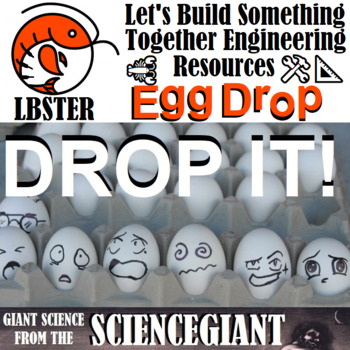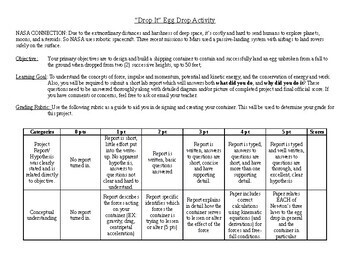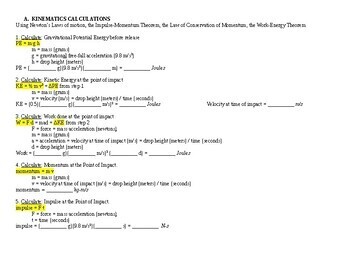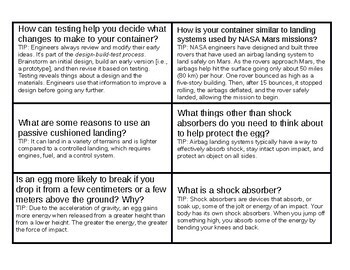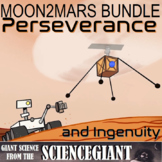STEM Activity: DROP IT! Egg Drop Challenge Project Based Learning
- Word Document File
Also included in
- NASA's Mars duo of the rover Perseverance and the helicopter Ingenuity arrived at the red planet and touched down inside Jezero Crater on February 18th, 2021. With this bundle of low-cost, high-impact activities, Ss can practice designing, building, and landing their own Mars mission. Bring the exciPrice $6.00Original Price $10.00Save $4.00
Description
Inexpensive and ingenious! Let's Build Something Together Engineering Resource (LBSTER) invites students to create the ideal egg container: the lightest container for an “A+” Grade to protect a raw Grade-A egg from cracking, such as after a four-story free fall drop from the football stadium stands! Ss participate in project based learning STEM activity with DROP IT! to understand how to safely ship containers; from cargo in cars to rovers on Mars. Successful explorations of Mars with rovers (like Pathfinder, Opportunity, and Spirit) has enhanced interest from students in space exploration.
Fan-n-pick and quiz-quiz trade are cooperative learning structures carried out by small teams. They are paired, answer questions and exchange explanations using the cards until time has been determined. Twelve questions on egg drop engineering to get Ss thinking and team building.
This LBSTER resource includes warm ups, worksheets, and recommended videos for review, and it's is in Microsoft Word .doc form so that Ts can customize the discussion to fit the needs of their Ss.
These activities are classroom tested to help students with the following Florida Next Generation Sunshine State Standards in Science:
Students Will Be Able To (SWBAT/I Can)
- SC.6.P.12.1 Measure and graph distance versus time for an object moving at a constant speed. Interpret this relationship.
- MAFS.8.SP.1.1: Construct and interpret scatter plots for bivariate measurement data to investigate patterns of association between two quantities. Describe patterns such as clustering, outliers, positive or negative association, linear association, and nonlinear association.
- SC.912.N.1.1 Plan investigations & pose answers.
- SC.912.N.1.7 Recognize the role of creativity in constructing scientific questions, methods and explanations.
- SC.912.P.12.2 Analyze the motion of an object in terms of its position, velocity, and acceleration (with respect to a frame of reference) as functions of time.
- SC.912.P.12.3 Interpret and apply Newton's three laws of motion.
- SC.912.P.12.4 Describe how the gravitational force between two objects depends on their masses and the distance between them.
- SC.912.P.12.5 Apply the law of conservation of linear momentum to interactions, such as collisions between objects.
Objectives:
- design and build a shipping container to contain and successfully land an egg unbroken from a fall to the ground when dropped from two (2) successive heights, up to 50 feet.
- define force, impulse and momentum, potential and kinetic energy, and the conservation of energy and work.
- determine the force of impact, mechanical energy of impact, work done by shock absorbers in container
- demonstrate an understanding of soft landing a spacecraft on the Moon and Mars.
#StayGiant and stay up on my new resources and STEM news. Look for the green ★ star near the top of any page within my store and click "FOLLOW". Or follow @TheScienceGiant Twitter. Stand on The Shoulders of Giants, and together we'll see further, inspire students, and enlighten inquisitive minds!

